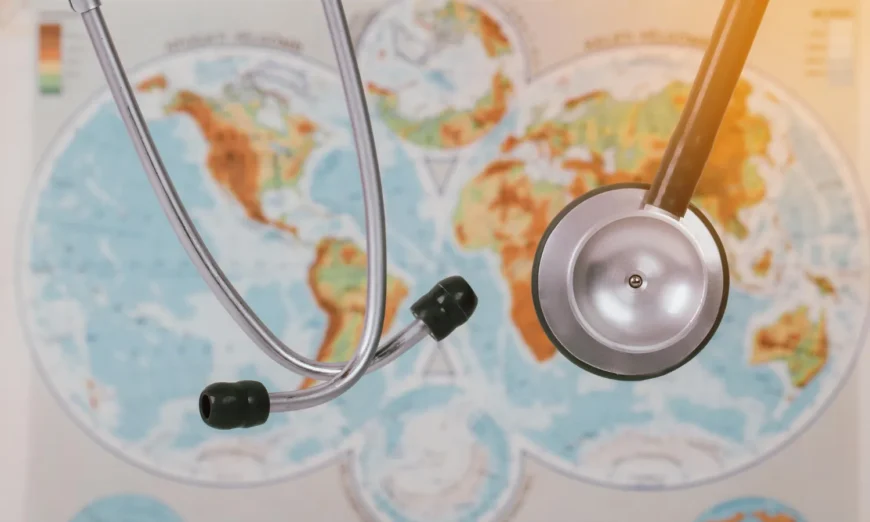Nestled along the northern edge of South America and culturally tied to the Caribbean, Guyana is beginning to emerge as a rising star in the global medical tourism industry. Historically overshadowed by larger regional players, Guyana is now taking strategic steps to build healthcare infrastructure, form international partnerships—especially with India—and create a niche for itself as a destination for affordable, quality medical care.
Scope of Medical Tourism in Guyana
Medical tourism in Guyana is still in its infancy but holds considerable promise. Patients from the Caribbean, Latin America, and North America are increasingly considering Guyana for its low-cost medical procedures, English-speaking medical professionals, and cultural familiarity. A key advantage is the affordability of treatment compared to the United States or Canada, often at one-third of the cost.
Dental care, cosmetic and reconstructive surgery, fertility treatment, orthopedic procedures, cardiovascular screening, and wellness retreats are among the most viable services. Moreover, Guyana’s eco-rich environment—lush rainforests, rivers, and peaceful resorts—makes it ideal for recovery and rehabilitation tourism.
The government is now actively branding Guyana as not just a place to visit, but a place to heal.
Current Status of Healthcare Infrastructure
Guyana’s healthcare infrastructure is a mix of public and private services. The public system provides essential care to most citizens, with major hospitals such as the Georgetown Public Hospital Corporation (GPHC) acting as referral centers for the country. However, public facilities are often overwhelmed and under-resourced.
The private sector is more developed in urban centers. Facilities such as St. Joseph Mercy Hospital, Balwant Singh Hospital, and Woodlands Hospital offer higher standards of care and are already catering to diaspora patients returning for medical attention.
In 2024, the government began constructing several regional diagnostic and surgical centers with Indian support, which are expected to be operational by 2026. There’s also an uptick in training partnerships with overseas institutions to improve local expertise and medical education.
Telemedicine is another growing area. COVID-19 accelerated its adoption, and now rural areas benefit from virtual consultations, especially in dermatology, psychiatry, and internal medicine. These digital bridges reduce the urban-rural divide in healthcare delivery and create scalable models for outreach.
Guyana-India Relations in Medical Collaboration
The medical relationship between Guyana and India is deeply rooted in shared history and mutual interest. India has emerged as a key healthcare partner, supplying equipment, medicines, and educational support. Numerous Guyanese doctors and nurses have trained in Indian institutions via scholarships provided under the Indian Technical and Economic Cooperation (ITEC) program.
In 2022, India donated a fleet of mobile medical units, complete with lab and X-ray capabilities, to support Guyana’s rural health missions. Additionally, Indian medical teams regularly visit to conduct surgeries, consultations, and training workshops, further building local capacity. The health sector also saw significant progress, with agreements including an MoU on the Recognition of Indian Pharmacopoeia Regulation to improve medicine regulation and another to implement the Janaushadhi Scheme (PMBJP) for supplying affordable medicines to CARICOM countries.
Plans are currently underway to establish a Guyana-India Centre for Medical Excellence, a collaborative institution aimed at offering specialized treatment, research, and professional development.
Support from the Indian Government and Diaspora
India’s support has been multi-pronged: diplomatic, technical, and economic. Beyond state-sponsored initiatives, the Indian diaspora plays a catalytic role. Organizations like the Global Organization of People of Indian Origin (GOPIO) help bridge gaps in medical infrastructure, donate equipment, and promote healthcare diplomacy.
Diaspora-led medical missions are frequent, especially during festive or national observances, when teams provide free health check-ups, diagnostics, and minor procedures in underserved communities.
Key Players and Private Sector Involvement
As confidence in Guyana’s growth grows, major healthcare investors are taking notice. Guyanese entrepreneurs and international firms have started investing in specialty clinics, diagnostic centers, and wellness resorts. Notably, companies from India like Apollo Hospitals and Fortis Healthcare have entered preliminary talks for joint ventures with local investors to develop world-class healthcare campuses in Georgetown.
Guyanese firms like Health International Inc. and Med Pharm Ventures are already acquiring land and approvals for multi-specialty hospital projects aimed at the medical tourism segment. These facilities are expected to include everything from cardiac and orthopedic wings to dialysis centers and therapeutic spas.
Pharmaceutical Industry and Medical Supplies
Pharmaceutical distribution in Guyana is dominated by imports, primarily from India. Indian pharmaceutical giants such as Cipla, Sun Pharma, Dr. Reddy’s, and Lupin have established supply chains to Guyana, delivering generic and branded drugs at affordable prices.
There is also growing interest in localized manufacturing. A feasibility study is underway (in cooperation with Indian pharmaceutical engineers) to establish a pharma manufacturing park in Guyana, aimed at serving the Caribbean market and reducing regional dependency on imports. Such a venture could make Guyana a logistics and production hub for Caribbean healthcare.
Investment Potential and Policy Support
The government of Guyana recognizes the value of healthcare as an economic driver and is actively creating a favorable climate for medical investment. Tax holidays, duty-free concessions on medical imports, and fast-track licensing are available to investors in healthcare infrastructure.
The Guyana Office for Investment (GO-Invest) now offers a dedicated healthcare investment desk, facilitating foreign partnerships and ensuring regulatory compliance. A new bill introduced in 2024 seeks to streamline hospital accreditation, quality assurance, and international insurance integration, all of which are crucial for building medical tourist trust.
Conclusion and Future Outlook
Guyana is at a pivotal moment. With the right blend of policy reform, international cooperation, and private investment, the country could well become a Caribbean leader in medical tourism by the early 2030s. Its strategic partnerships with India, supported by a proactive diaspora and a growing middle class, lay a strong foundation. Guyana’s healing hands are ready—not just for its own people, but for the world.

